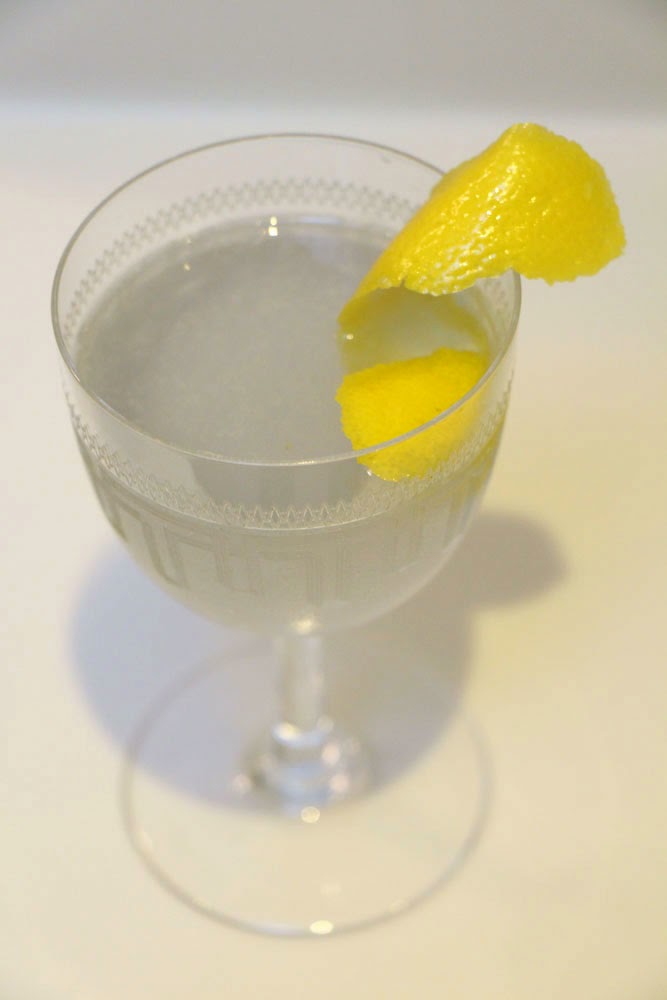Before Christmas I was invited to the “Jim Beam American Stillhouse”. In town for just a couple of days it promised to transport me to “the rolling hills of Kentucky”, as well as offering “an attack on the senses through an authentic distillery experience”. Blimey, that sounds like the bourbon equivalent of a bungee jump, or perhaps just a drinking competition at an illegal Siberian still.
Run by the same people who brought us the impenetrably fey Courvoisier “Institute of Grand Cocktails” in 2012, this particular “immersive experience” proved to be much more down-to-earth. There were just the three rooms, erected from partitions within a space at the Old Truman Brewery, on Brick Lane in Shoreditch, connected by corridors plated with the ends of barrels, to make you feel like a termite creeping through a cavernous warehouse filled with slumbering whiskey. The first was the Heritage Room, where we were met by none other than Fred Noe (Frederick Booker Noe III, to give him his full honorific), seventh generation master distiller and great grandson of Jim Beam himself, who built the distillery upon the repeal of Prohibition in 1933.
Fred is a likeable character. He told us how to taste bourbon by doing the “Kentucky chew”, but was keen to emphasise that the brand is very easygoing about how you drink the product. The ringing refrain throughout his address was, “That’s OK.” You slightly got the impression that he was a bit overwhelmed by the weight of the heritage represented in the Heritage Room, and that his main goal during his tenure at the top was not to mess with anything that was clearly not broken. (Jim Beam is the biggest selling bourbon in the world.) He considered us from a fake veranda under the gaze of a huge photo of a statue of his father in the stillhouse grounds—the statue itself may be colossal too, though it’s hard to tell from the photo.
We had all been issued with “passports” and before leaving the Heritage Room we had to ours stamped. I’m not sure why we needed a passport to move from one room to another in a mocked up stillhouse in Kentucky (especially ironic given the huge proportion of Americans who don’t have passports because they have never left the country). But at least I can prove to US immigration authorities that I have tasted both Jim Beam regular and Jim Beam Devil’s Cut.
The latter was introduced in the next chamber, the Distillation and Ageing Room, where we were assailed by some highly dodgy Kentucky accents (Fred’s was clearly the only genuine one in the building) explaining to us how and from what, by law, bourbon can be made. (For the record it must be at least 51% corn, the rest being rye, wheat and/or malted barley; it must be made in the US, distilled at less than 80% ABV, entered into the barrel at no more than 62.5% ABV, bottled at no less than 40% ABV, and with no additives other than water to adjust the ABV; it must be aged fin new, charred white oak barrels; to be called “straight bourbon” it must be aged for at least two years.)
The Devil’s Cut is a product launched about a year ago. Deriving from the term “the angels’ share”, referring to the spirit that evaporates from the barrel during the years of ageing, the name Devil’s Cut represents the opposite—spirit that is left in the barrel at the end.
After the whisky is ready and the barrel is emptied, there is a traditional practice known as “sweating the barrel”, where a little water is added the empty barrel, which is then kicked around to soak out any whisky left in the wood. Most distillers rinse or soak the barrels to try and extract these last drops, and Beam have apparently developed a proprietary technique. These—for want of a better word—dregs are then blended with six-year-old whisky. We get to sample some of the finished blend, and it is a darker, more intense tipple, with strong wood flavours and almost mouth-puckering tannins. Very agreeable, and suggestive of mixological potential.
The final chamber is the Mixology Room where bartenders offer four different cocktails showcasing spirits from the Jim Beam range. Sadly we’re only allowed to try one each: I go for the Red Stagg Manhattan, utilising Beam’s black cherry flavoured bourbon, which doesn’t leave much of an impression; more interesting was the sip I had of someone else’s Mint Julep made with Devil’s Cut and marmalade syrup.
We have a final treat in store: there is a big barrel in the lobby, which we are all invited to sign. Apparently it will be taken back to Kentucky and filled with bourbon, and when it is emptied in four years’ time—assuming cirrhosis hasn’t finished us off in the interim—we each get a bottle from the barrel.
Run by the same people who brought us the impenetrably fey Courvoisier “Institute of Grand Cocktails” in 2012, this particular “immersive experience” proved to be much more down-to-earth. There were just the three rooms, erected from partitions within a space at the Old Truman Brewery, on Brick Lane in Shoreditch, connected by corridors plated with the ends of barrels, to make you feel like a termite creeping through a cavernous warehouse filled with slumbering whiskey. The first was the Heritage Room, where we were met by none other than Fred Noe (Frederick Booker Noe III, to give him his full honorific), seventh generation master distiller and great grandson of Jim Beam himself, who built the distillery upon the repeal of Prohibition in 1933.
 |
| Fred Noe addresses us, safe in the knowledge that there is a bottle of Jim Beam to hand on the porch roof |
We had all been issued with “passports” and before leaving the Heritage Room we had to ours stamped. I’m not sure why we needed a passport to move from one room to another in a mocked up stillhouse in Kentucky (especially ironic given the huge proportion of Americans who don’t have passports because they have never left the country). But at least I can prove to US immigration authorities that I have tasted both Jim Beam regular and Jim Beam Devil’s Cut.
 |
| Attendant journalists relax, which is probably more than Fred can do with a giant effigy of his father looking down on him |
The Devil’s Cut is a product launched about a year ago. Deriving from the term “the angels’ share”, referring to the spirit that evaporates from the barrel during the years of ageing, the name Devil’s Cut represents the opposite—spirit that is left in the barrel at the end.
 |
| Whom should I bump into but vintage blogger and pin-up Fleur de Guerre, seen here signing the barrel |
 |
| The Mixology room proves stinting of its fruits |
We have a final treat in store: there is a big barrel in the lobby, which we are all invited to sign. Apparently it will be taken back to Kentucky and filled with bourbon, and when it is emptied in four years’ time—assuming cirrhosis hasn’t finished us off in the interim—we each get a bottle from the barrel.












































































.jpg)









